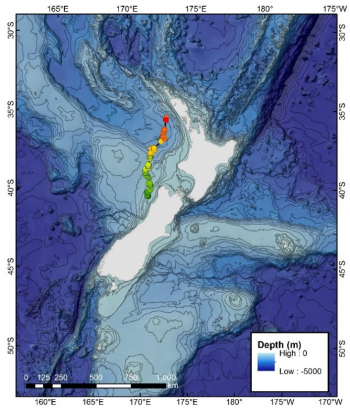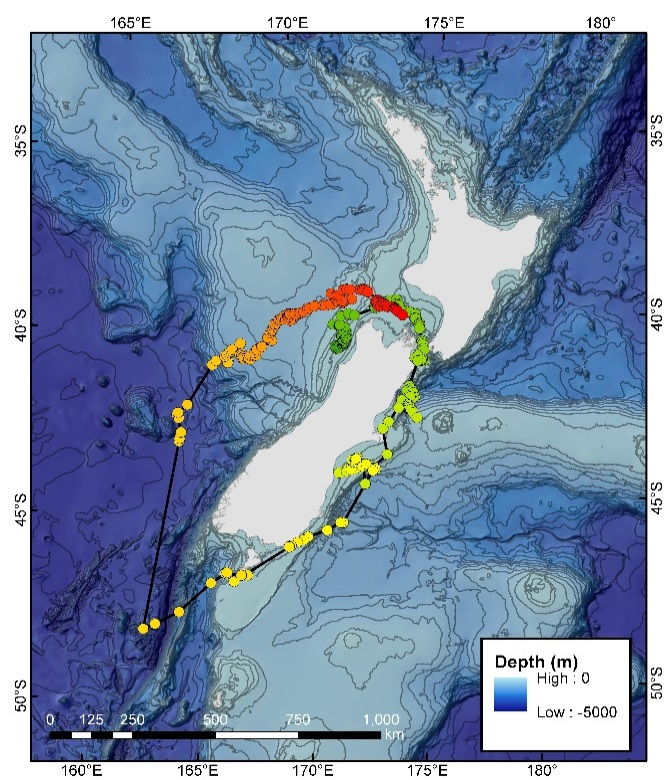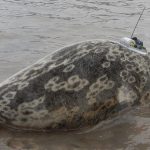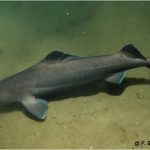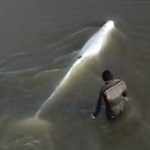← Back
Understanding the movement of pygmy blue whales in New Zealand waters

There is little known for cetacean species such as pygmy blue whales, but they are at the forefront of protection policies around the world. The distribution of those whales around New Zealand are studied using Argos PTTs and goniometer.
There are two subspecies of blue whales recognized in the Southern Hemisphere – the Antarctic blue whale (Balaenoptera musculus intermedia) and the pygmy blue whale (Balaenoptera musculus brevicauda). To date, little is known about the distribution and seasonal movements of pygmy blue whales in any part of the world, including New Zealand, to the point that the International Union for Conservation of Nature considers this sub-species ‘data-deficient’.
Feeding grounds in New Zealand waters
Though both subspecies are present in New Zealand waters, previous research has identified the Taranaki Bight and greater Cook Strait region (between the North and South islands) as an important area for pygmy blue whales. However, the Hauraki Gulf and areas offshore Oamaru and Westport have also been identified as potential feeding locations.
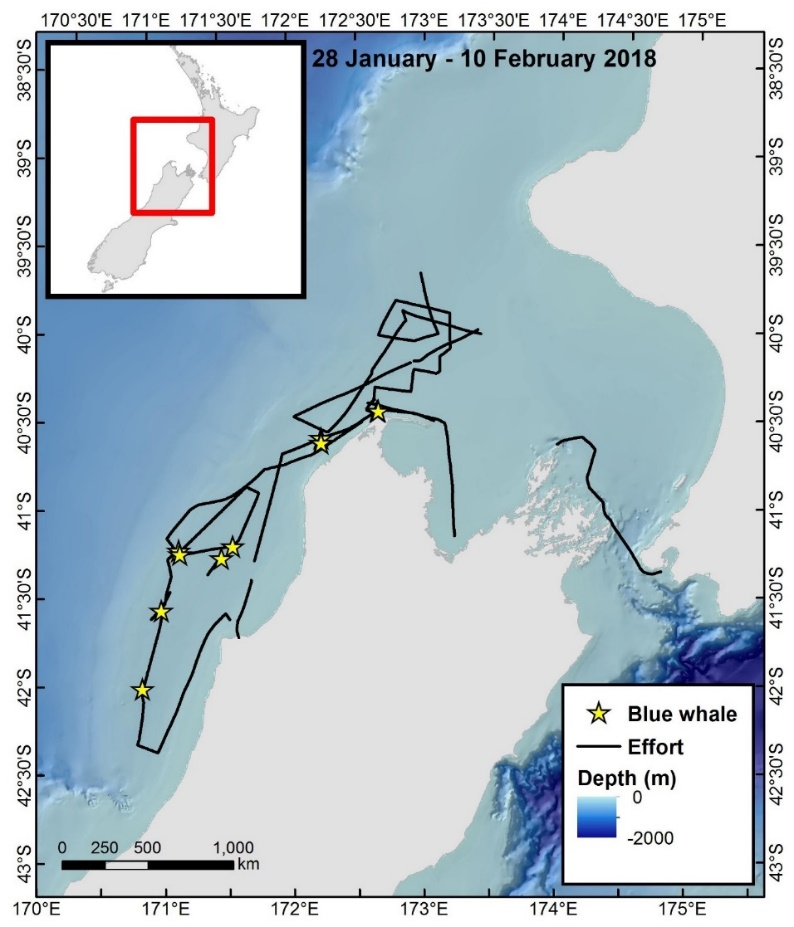
On-effort tracklines and blue whale sighting events collected during the 2018 blue whale voyage. In total during this voyage, 11 blue whale sightings were made consisting of 14 unique individuals. The voyage departed from Wellington, New Zealand on the 28 January and returned to the same port on 10 February 2018 (Kim Goetz, NIWA)
Tracking pygmy whales with Argos
To assess the relative importance of the greater Taranaki region for this species, researchers aimed to attach Argos satellite tags to pygmy blue whales, to track their long-term movements and habitat use. However, they found whales further south than in previous years, in lower numbers, and they did not observed them surface feeding, likely due to the La Niña anomalous oceanographic conditions. Sea surface temperatures were warmer (4-6 °C higher than average climatology), west wind flows were reduced, and consequently, upwelling was also reduced, significantly impacting the high productivity characteristic of the Taranaki region.
Finding tags with the Argos goniometer
Argos transmitters were successfully attached to two animals off Westport. The ARGOS goniometer worked well to relocate the animals after tagging, in hopes of finding other blue whales in the area. While no additional animals were found, relocating the whales allowed further assessment of tag placement and attachment. Neither of the two tagged animals spent much time at the tagging site or in the Taranaki region; one animal travelled North along the west coast of the North Island before transmissions ceased and the other travelled through Cook Strait and completed a circuit around the South Island. Due to the small sample size and anomalous oceanographic conditions, it is not known if the movement of these animals is representative of typical pygmy blue whale behaviour in New Zealand waters.
| Tracking data from a satellite tracked blue whale. The green to red gradient reflects the start (green) and end (red) of the track. Note that tag transmissions have not been received from Argos transmitter from transmitter 46636 (male) since 14 February (left) and from transmitter 46657 (sex unconfirmed) since 27 March 2018 (right) (Kim Goetz, NIWA) | |
However, these results show that protection measures that disregard the oceanographic factors influencing prey distribution and abundance are not likely to be effective. Establishing a larger program to better understand the movement and habitat use of pygmy blue whales in New Zealand waters as well as the influence of upwelling events in driving blue whale distribution is necessary for decisions that are at the forefront of political and societal priorities.
Acknowledgments:
The blue whale voyage was funded by OMV Ltd and the Department of Conservation and was a collaboration between NIWA, Blue Planet Marine, Australian Antarctic Division, National Oceanic and Atmospheric Administration, the University of Oregon, and the University of Auckland. We would like to thank the crew of the M/V Star Keys and Western Work Boats for assistance and expertise on the water. Dr Leigh Torres provided advice based on her previous experience conducting blue whale research in the area. Finally, we would like to thank Golden Bay Air and Pacific Pilot Training for offering air support to locate blue whales. Real-time sightings of blue whales reported by the public and fisherman were instrumental in our success.
Additional links:
NIWA and DOC to embark on blue whale research expedition
Tagged blue whale swims around the South Island
Warmer seas make whales more difficult to find and track
Satellite tracking of blue whales in New Zealand waters
Photo showing animal with attached Argos transmitter on 9 February 2018 (Krista Hupman, NIWA)

